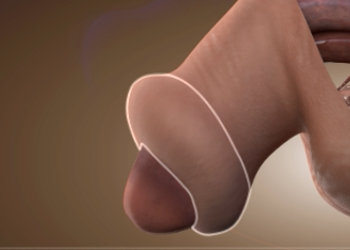 Penile cancer may be found in 0.4% to 0.6% of the male population in Europe and the United States. The percentage increases in some male populations in Asia, Africa and South America. Its appearance is found in men undergoing the sixth decade of life with an average of 58 years. Rarely, penile cancer has been reported in younger ages.
Penile cancer may be found in 0.4% to 0.6% of the male population in Europe and the United States. The percentage increases in some male populations in Asia, Africa and South America. Its appearance is found in men undergoing the sixth decade of life with an average of 58 years. Rarely, penile cancer has been reported in younger ages.
Εtiology
According to studies, the most important risk factor is inadequate local sanitation. The sebum accumulation, especially when phimosis of the penis is also present, results in chronic inflammation that leads to cancer. It rarely occurs in people who for religious reasons undergo circumcision in infancy. Penile cancer seems to be causally related to the infection by the human papillary virus and the frequent change of sexual partners.
Clinical picture
It usually starts as a small painless nodule detected more often on the glans or the foreskin. It may even appear as a painless ulceration that gradually increases in size. Proper diagnosis may be delayed when phimosis of the penis is present that covers the lesion. Each area of the glans with discoloration or induration, every little ulcer and any recurrent inflammation along with a phimosis of the penis, should raise suspicion and could be the beginnings of penile cancer. In very advanced stages of the disease, a smelly discharge as well as ulcers and bleeding appear, along with a destruction of the architecture of penile tissue.
Diagnosis
The primary lesion should be assessed with respect to the size, location and filtration of the tissues.
The palpation of the lymph nodes should be careful because more than half of the patients seek medical help when the lymph nodes are already enlarged. Penile carcinoma must be differentiated from other pre-malignant lesions such as leukoplakia, sclerosing balanitis and genital warts, as well as other inflammatory conditions, such as chancre and lymphogranuloma venereum. Serologic tests, urine cultures and ultimately biopsy usually provide concluding information concerning the actual nature of the lesion.
Treatment
In the absence of lymph node filtration, superficial tumors are treated conservatively with the application of fluorouracil cream, Laser, cryotherapy or local excision in order to preserve the penis. In infiltrating lesions, complete removal of the tumor in healthy tissue is recommended except if the patient refuses to undergo such a procedure, in that case, radiotherapy becomes necessary. In the presence of lymph node filtration, after the primary lesion has been treated, patients with low-risk tumors that do not have palpable lymph nodes present or do have them but have retreated through the use of antibiotics, require only careful monitoring. This is so because the probability of micrometastases is <16%. In patients with intermediate risk tumors, limited sampling of the lymph nodes should be attempted, while for high risk tumors, limited lymphadenectomy is required. If the lymphadenopathy persists, then bilateral lymphadenectomy must follow. Patients with non-excludable disease or large masses of inguinal lymph nodes, may undergo chemotherapy.
Prognosis
Penile cancer survival rates are related to the presence or absence of lymph node metastases. The 5-year survival for patients with negative lymph nodes ranges from 65% -90%. For patients with positive inguinal lymph nodes, the survival rate is reduced to 30% -50%, for patients with iliac lymph nodes, the rate falls below 20%. The time required for lymph node cleansing has prognostic significance and a delay in its execution reduces the 5-year survival rate.